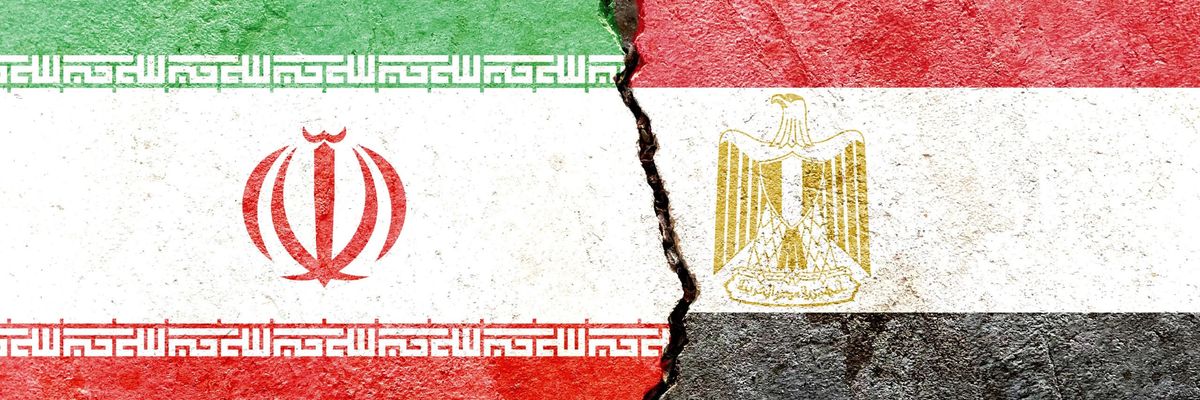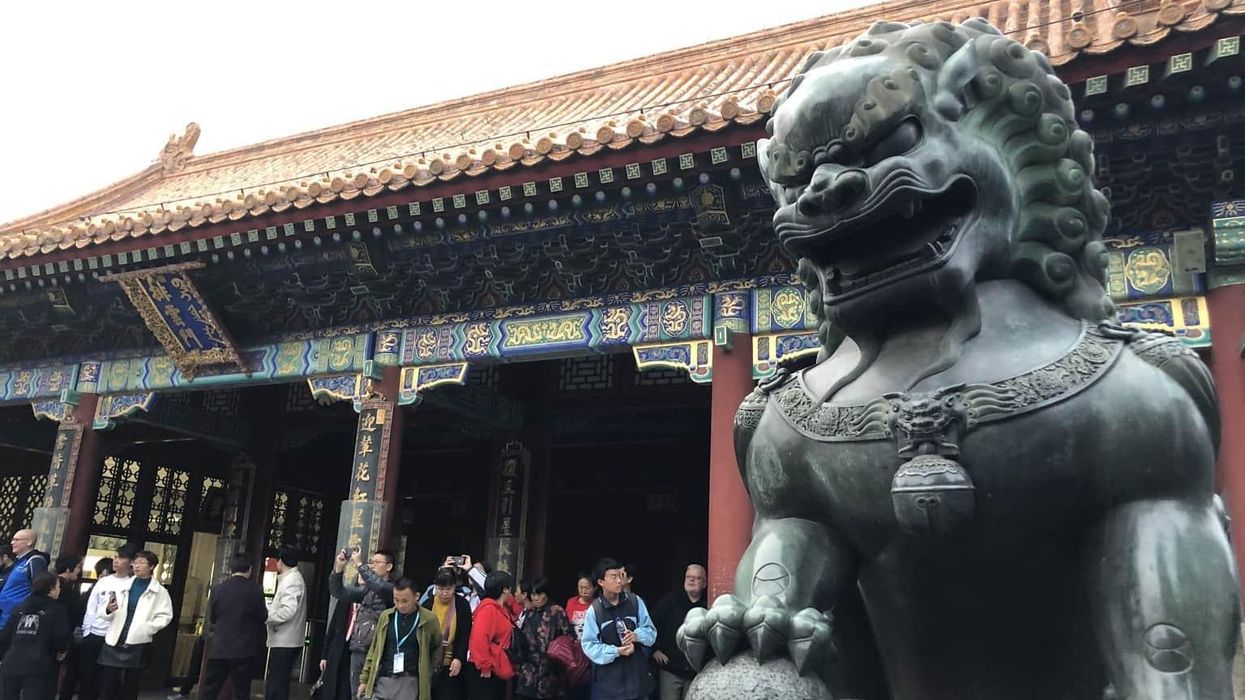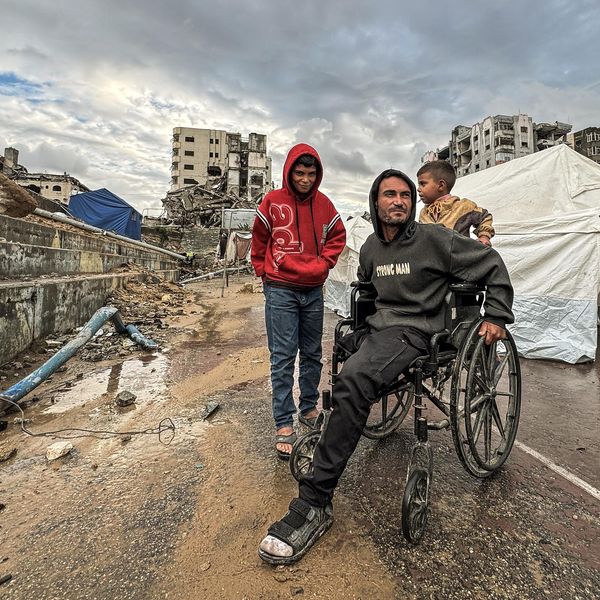On October 6, 1981, Egyptians were celebrating the eighth anniversary of Operation Badr, which marked the start of the 1973 Arab-Israeli War, with a victory parade in Cairo.
As troops marched past the reviewing stand, a cell in the military led by Lieutenant Khalid Islambouli attacked and assassinated Egyptian President Anwar Sadat in a murderous protest of the 1978 Camp David Accords. Making peace with the Jewish state, as Sadat did three years before, was a controversial move that essentially removed Egypt from the Arab-Israeli conflict and enraged large segments of the country’s population and the wider Arab and Islamic worlds.
A firing squad executed Islambouli the following year. At the time, Iran’s new revolutionary government, led by Ayatollah Ruhollah Khomeini, declared Islambouli a martyr, and named a street in Tehran after him. Sadat’s close relationship with the Shah of Iran (whom he welcomed to Egypt after his ouster in 1979), as well as Cairo’s support for Baghdad in the Iran-Iraq War and Egypt’s peace treaty with Israel, gave the Islamic Republic’s leadership reason to glorify Islambouli. Ever since Sadat’s assassination, the relationship between Cairo and Tehran has been troubled albeit with occasional periods of détente.
Today, however, Egypt and Iran appear to be entering a new chapter in their relations. Last month, news broke about Cairo and Tehran’s purported plans to exchange ambassadors later this year along with arranging a meeting between their presidents. Although distrust and suspicion will probably continue shaping bilateral relations, regional dynamics, along with their own national interests, suggest that a Cairo-Tehran rapprochement could be around the corner.
“There have been many efforts in the past to normalize relations between Cairo and Tehran, but they have all failed for a variety of reasons,” according to Trita Parsi, the Quincy Institute’s executive vice president and an expert on Iranian diplomacy. “This time around, however, because of the geopolitical shifts in the region, the cost of maintaining a state of non-normalization is much higher for both sides, while the benefits are greater.”
Reduced friction between Saudi Arabia and the United Arab Emirates on one side and Iran on the other makes an Egyptian-Iranian rapprochement more probable. “Egypt is obviously aligned with [Saudi Arabia and the UAE] to a large extent. The fact that the Gulf states are engaging Iran makes it easier for [Egyptian President Abdel Fattah] el-Sisi to go in that same direction,” explained Kenneth Katzman, a Senior Fellow at the Soufan Center, in an interview with Responsible Statecraft.
The Saudi-Iran détente has “reverberated across the region and created an atmosphere of optimism for de-escalating the conflicts in the region never seen in the past decade,” affirmed Khalil Alanani, a Senior Fellow at the Arab Center Washington. If Riyadh can normalize relations with Tehran, there is no reason for other Arab nations, including Egypt, to follow suit. “The normalization between Saudi Arabia and Iran removes any ‘Gulf’ veto, if there’s such [a] thing, on Sisi’s regime to normalize ties with Tehran. Or at least, Sisi can use it as a pretext to justify normalizing relations with Tehran.”
The potential détente has also been fueled by other geopolitical factors, such as the war in Ukraine, as well as Moscow and Beijing’s growing influence in the Middle East. “[Egypt and Iran] have strong relations with Russia and China, and the prospects of achieving political, economic, and geostrategic gains are massive,” added Alanani.
Oman’s Diplomatic Energy
Oman, the Gulf Cooperation Council’s most geopolitically balanced member, has joined Iraq in diplomatic efforts to facilitate an Egyptian-Iranian rapprochement. In fact, this is not the first time in which the Omanis have been playing this bridging role between Egypt and Iran. Muscat previously did so in 1991.
“Oman does have consistent relations with Tehran. That certainly gives them weight with Cairo to bring Tehran into an agreement with Cairo,” said Katzman.
The historical context is important. In the final quarter of the 20th century, Oman served as a reliable friend to both Egypt and Iran when much of the Arab world shunned both countries.
After Egypt and Israel made peace in 1978, Oman, Somalia, and Sudan were the only Arab League members that didn’t sever relations with Sadat’s government. Oman also declined to participate in the 1978 Baghdad rejectionist summit, and in May 1982, Sultan Qaboos became the first Arab leader to visit Sadat’s successor, Hosni Mubarak, since the Camp David Accords were signed.
Similarly, after the 1979 Islamic Revolution, Sultan Qaboos took steps to ensure that his country’s close relations with Tehran that characterized relations under the Shah would be sustained. While the other GCC states supported Saddam Hussein in the Iran-Iraq War, Oman maintained its neutrality and hosted secret ceasefire talks between Baghdad and Tehran to wind down that conflict. Sharing ownership of the narrow Strait of Hormuz with Iran, Sultan Qaboos understood that cordial relations with his far more powerful neighbor served his country’s security interests.
Last month’s visits by Sultan Haitham to both Egypt and Iran highlighted the importance the Omani leadership attaches to rapprochement between the two countries. During the Sultan’s visit to Iran, Supreme Leader Ayatollah Ali Khamenei was quoted as saying that he would welcome restored diplomatic ties with Egypt. Throughout 2023, Oman has been busy serving as a diplomatic bridge between different state and non-state actors in the region. Muscat has made significant progress in terms of helping Saudi Arabia move closer to peace with Yemen’s Houthi insurgency; it contributed to the Saudi-Iranian diplomatic agreement; and it has also been active in mediation efforts between long-time adversaries Bahrain and Iran.
Egypt and Iran’s National Interests
By normalizing relations, Egypt hopes that Iran will act as a moderating influence over Hamas and Palestinian Islamic Jihad in Gaza. After all, these days Egypt and Qatar do the diplomatic heavy lifting to put ceasefires into place when tensions between Hamas and/or PIJ, both of which Tehran backs, and Israel escalate into conflict. “Each time Israel and the Gaza militants clash, the potential for escalation grows,” Katzman said. “That would be the main thrust of Egypt’s motivation for this potential rapprochement [with Iran].”
Iran, for its part, wants to improve its relationships with more countries in the Middle East. Better relations with Cairo could help Iran further reduce its relative isolation in the region, particularly in light of its rapprochements with Saudi Arabia and the UAE. Friendlier ties with Egypt could help the Iranians counter U.S. and Israeli efforts to rally Arab nations against the Islamic Republic while also making it easier for Tehran to argue that it should not be treated like a “rogue” actor.
“Ever since the Middle Eastern states fully realized that the U.S. was no longer in a position to maintain its military hegemony over the region, we have seen a flourishing of intra-regional diplomacy since sustaining conflicts became too costly while resolving tensions through diplomacy emerged as the optimal policy for most states,” explained Parsi. “The region is experiencing a new-found sense of confidence as it rediscovers its own agency. A new balance for the region may be settled in the coming months, and both Egypt and Iran benefit from maximizing their maneuverability by being on talking terms.”
















